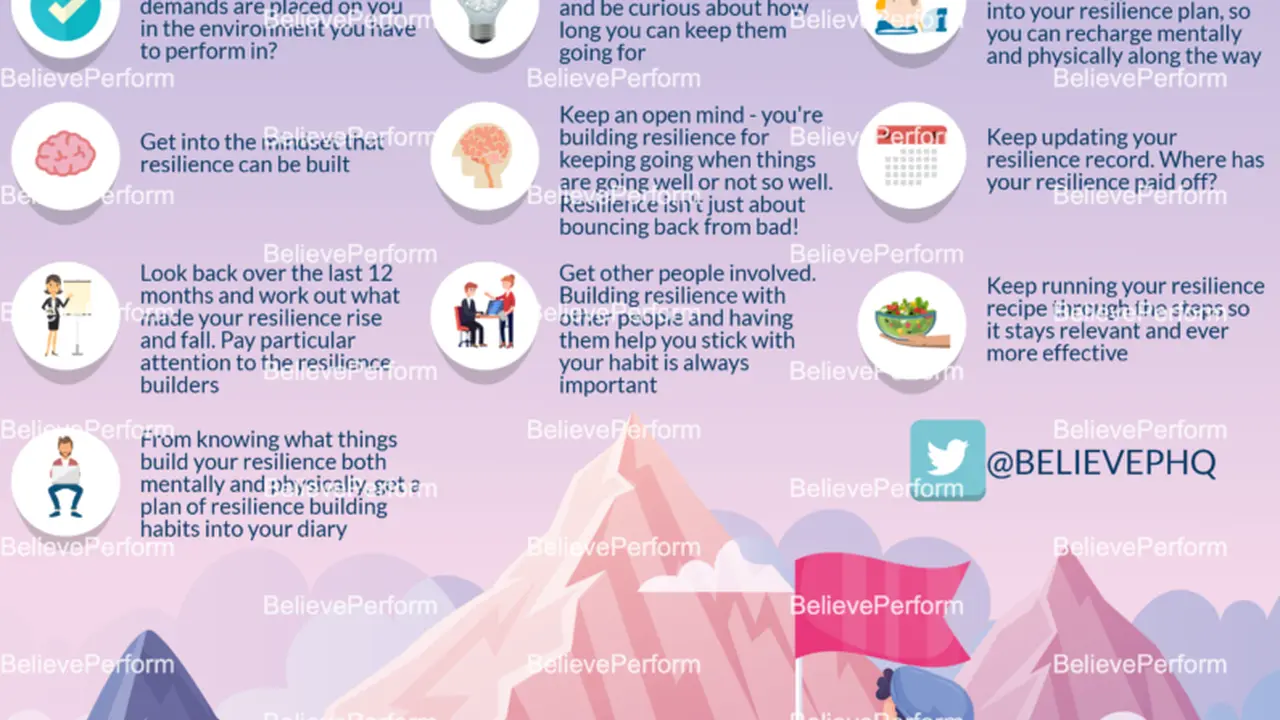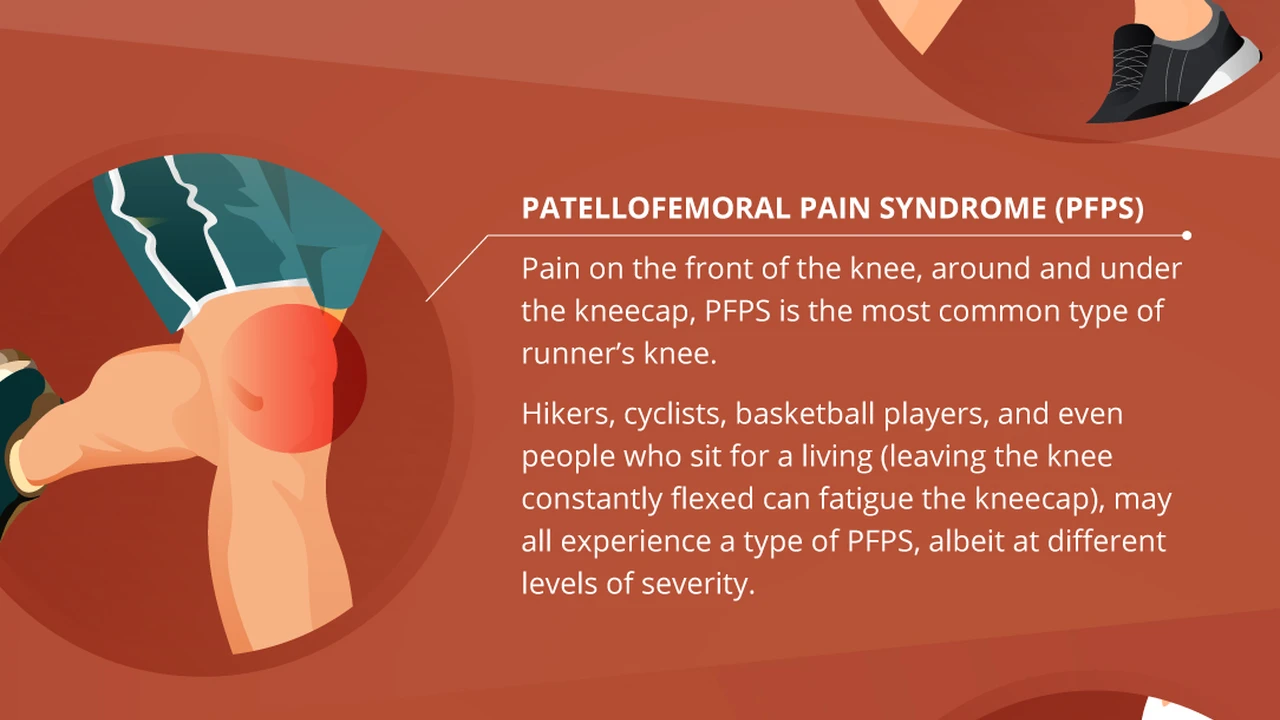Mental Training for Joggers: Building Resilience

The Importance of Proper Warm Up Techniques for Jogging Performance
Warming up before a jog is absolutely crucial. Think of it as preparing your body for the task ahead. It's not just about preventing injury; it's about optimizing your performance and enjoying your run more. Skipping the warm-up is like trying to start a car on a cold morning without letting the engine warm up – it'll probably work, but it's not going to be smooth, and it's definitely putting unnecessary stress on the system.
A good warm-up should gradually increase your heart rate and blood flow to your muscles. This makes your muscles more pliable and less prone to strains and tears. It also primes your nervous system, improving coordination and reaction time. Plus, a proper warm-up can mentally prepare you for your run, helping you focus and get in the right mindset.
Dynamic Stretching for Joggers Enhanced Flexibility and Range of Motion
Dynamic stretching involves controlled movements that gradually increase your range of motion. Unlike static stretching, which involves holding a stretch for a prolonged period, dynamic stretches mimic the movements you'll be doing during your run. This makes them much more effective for preparing your body for jogging.
Some excellent dynamic stretches for joggers include:
- Leg Swings: Swing your leg forward and backward, keeping your core engaged and your back straight. This warms up your hip flexors and hamstrings.
- Arm Circles: Make small and then larger circles with your arms, forward and backward. This warms up your shoulder muscles.
- Torso Twists: Gently twist your torso from side to side, keeping your feet planted on the ground. This warms up your core and obliques.
- High Knees: Bring your knees up towards your chest, alternating legs. This warms up your hip flexors and quads.
- Butt Kicks: Bring your heels up towards your glutes, alternating legs. This warms up your hamstrings.
- Walking Lunges: Step forward with one leg and lower your body until both knees are bent at 90 degrees. Alternate legs. This warms up your quads, glutes, and hamstrings.
Perform each of these exercises for about 10-15 repetitions. Remember to focus on controlled movements and avoid bouncing or forcing the stretch.
Foam Rolling for Joggers Muscle Recovery and Injury Prevention
Foam rolling is a form of self-myofascial release that can help to improve flexibility, reduce muscle soreness, and prevent injuries. It involves using a foam roller to apply pressure to tight muscles, which helps to release knots and improve blood flow.
Some key areas to foam roll before jogging include:
- Calves: Roll from your ankle to your knee, paying attention to any tender spots.
- Hamstrings: Roll from your knee to your glutes, again focusing on any tender spots.
- Quads: Roll from your knee to your hip, paying attention to the outer and inner parts of your quads.
- Glutes: Sit on the foam roller and roll from your hip to your lower back.
- IT Band: Roll from your hip to your knee on the outside of your thigh. This can be a sensitive area, so start gently and gradually increase the pressure.
Spend about 30-60 seconds on each area, focusing on any tender spots. Remember to breathe deeply and relax your muscles as you roll.
Advanced Jogging Techniques Optimizing Your Running Form
Beyond just putting one foot in front of the other, advanced jogging involves fine-tuning your running form to maximize efficiency and minimize the risk of injury. It's about understanding the biomechanics of running and making conscious adjustments to your posture, stride, and arm movement.
Good running form can help you run faster, farther, and with less effort. It can also reduce your risk of developing common running injuries, such as shin splints, plantar fasciitis, and runner's knee.
Cadence and Stride Length Finding Your Optimal Rhythm
Cadence refers to the number of steps you take per minute. Stride length is the distance between each step. Finding the right balance between cadence and stride length is crucial for efficient running.
A higher cadence (around 170-180 steps per minute) is generally recommended for joggers. This reduces the impact on your joints and helps to prevent overstriding, which can lead to injuries. To increase your cadence, focus on taking shorter, quicker steps. You can use a metronome or a running app to help you maintain the desired cadence.
Stride length should be natural and comfortable. Avoid overstriding, which means reaching too far forward with your foot. This can put extra stress on your hamstrings and knees. Instead, focus on landing your foot underneath your body, with a slight bend in your knee.
Posture and Body Alignment Maintaining a Strong Core
Good posture is essential for efficient running. Stand tall with your head up, shoulders relaxed, and core engaged. Avoid slouching or leaning forward, which can restrict your breathing and put extra strain on your back.
Your body should be aligned from head to toe. Imagine a straight line running from your ear, through your shoulder, hip, knee, and ankle. This will help to maintain proper balance and prevent injuries.
Engaging your core muscles is crucial for maintaining good posture and stability. Think of your core as the foundation of your running form. A strong core will help to stabilize your spine and prevent excessive rotation, which can lead to injuries.
To engage your core, imagine drawing your belly button towards your spine. You should feel a slight tension in your abdominal muscles. Maintain this engagement throughout your run.
Arm Swing and Hand Position Maximizing Efficiency
Your arm swing plays a crucial role in propelling you forward. Keep your arms bent at a 90-degree angle and swing them forward and backward, not across your body. Your hands should be relaxed and close to your body.
Avoid clenching your fists, which can create tension in your shoulders and neck. Instead, keep your hands loose and relaxed. You can imagine holding a potato chip in each hand without breaking it.
Your arm swing should be coordinated with your leg movement. As your left leg moves forward, your right arm should swing forward. This helps to maintain balance and momentum.
Nutrition and Hydration Strategies Fueling Your Jogging Performance
Proper nutrition and hydration are essential for optimizing your jogging performance and preventing fatigue. What you eat and drink before, during, and after your runs can significantly impact your energy levels, recovery, and overall health.
Think of your body as a high-performance engine. It needs the right fuel and fluids to run efficiently and effectively.
Pre Run Nutrition Optimizing Energy Levels
Before a jog, focus on consuming carbohydrates to provide your body with energy. Choose easily digestible carbohydrates that won't cause stomach upset. Some good options include:
- Oatmeal: A great source of complex carbohydrates and fiber.
- Banana: Provides potassium and quick energy.
- Toast with Jam: A simple and easily digestible carbohydrate source.
- Energy Bar: Choose a bar that is low in fat and fiber and contains mostly carbohydrates.
Avoid consuming high-fat or high-fiber foods before a run, as these can slow down digestion and cause stomach discomfort.
The timing of your pre-run meal is also important. Aim to eat about 1-2 hours before your run to allow your body time to digest the food. If you're running first thing in the morning, you may need to experiment to find what works best for you. A small snack, such as a banana or a handful of crackers, may be sufficient.
Hydration for Joggers Staying Properly Hydrated
Staying properly hydrated is crucial for preventing dehydration, which can significantly impact your performance. Dehydration can lead to fatigue, muscle cramps, and decreased concentration.
Drink plenty of water throughout the day, especially in the days leading up to a long run. Aim to drink at least 8 glasses of water per day.
Before a run, drink about 16-20 ounces of water or a sports drink. During a run, drink about 4-8 ounces of water or a sports drink every 15-20 minutes, especially if you're running for more than an hour.
After a run, rehydrate with water or a sports drink to replenish fluids lost through sweat. You can also weigh yourself before and after your run to determine how much fluid you've lost. For every pound of weight lost, drink 16-24 ounces of fluid.
Post Run Recovery Fueling Muscle Repair
After a jog, focus on consuming protein and carbohydrates to help your muscles recover and rebuild. Protein is essential for muscle repair, while carbohydrates replenish glycogen stores that have been depleted during your run.
Some good post-run recovery foods include:
- Chocolate Milk: A great source of protein and carbohydrates.
- Greek Yogurt with Fruit: Provides protein and antioxidants.
- Protein Shake: A convenient and quick way to get protein.
- Chicken Breast with Rice: A balanced meal that provides protein and carbohydrates.
Aim to consume your post-run recovery meal within 30-60 minutes of finishing your run to maximize muscle recovery.
Gear and Equipment Essentials Choosing the Right Running Shoes
Having the right gear and equipment can make a big difference in your jogging experience. From running shoes to apparel to accessories, choosing the right gear can improve your comfort, performance, and safety.
Investing in quality gear is an investment in your health and well-being.
Running Shoes Finding the Perfect Fit for Your Feet
Choosing the right running shoes is arguably the most important gear decision you'll make as a jogger. The right shoes can provide cushioning, support, and stability, helping to prevent injuries and improve your comfort.
There are many different types of running shoes available, so it's important to find a pair that is right for your foot type, running style, and the terrain you'll be running on.
Here are some tips for choosing the right running shoes:
- Get Fitted at a Specialty Running Store: A knowledgeable salesperson can assess your foot type, running style, and needs and recommend the best shoes for you.
- Consider Your Foot Type: Are you a neutral runner, overpronator, or supinator? Each foot type requires different levels of support and stability.
- Consider the Terrain: Will you be running on roads, trails, or a track? Different terrains require different types of shoes.
- Try on Shoes in the Afternoon: Your feet tend to swell throughout the day, so it's best to try on shoes in the afternoon when your feet are at their largest.
- Wear Running Socks: Wear the same type of socks you'll be running in when you try on shoes.
- Run Around the Store: Take the shoes for a short run around the store to see how they feel.
Some popular running shoe brands include:
- Nike: Known for their innovative technology and stylish designs.
- Adidas: Known for their comfortable and durable shoes.
- Brooks: Known for their focus on biomechanics and injury prevention.
- Saucony: Known for their lightweight and responsive shoes.
- New Balance: Known for their comfortable and well-cushioned shoes.
Product Recommendation: The Brooks Ghost 14 is a highly rated neutral running shoe that provides excellent cushioning and support. It's a great option for runners of all levels.
Use Case: Daily training, long runs, recovery runs.
Product Comparison: Compared to the Nike Air Zoom Pegasus 38, the Brooks Ghost 14 offers a slightly softer and more cushioned ride. The Nike Air Zoom Pegasus 38 is a bit more responsive and versatile.
Detailed Information: The Brooks Ghost 14 features DNA LOFT cushioning for a soft and responsive ride. It also has a Segmented Crash Pad for smooth transitions. The shoe weighs 10.1 ounces and has a 12mm drop.
Pricing: Typically retails for around $130.
Running Apparel Choosing Comfortable and Functional Clothing
Choosing the right running apparel can also improve your comfort and performance. Look for clothing that is made from moisture-wicking fabrics that will keep you dry and comfortable. Avoid cotton clothing, which can become heavy and uncomfortable when wet.
Consider the weather conditions when choosing your running apparel. In warm weather, wear lightweight and breathable clothing. In cold weather, wear layers to stay warm and dry.
Some essential running apparel items include:
- Running Shorts or Tights: Choose a pair that is comfortable and allows for freedom of movement.
- Running Shirt: Choose a shirt that is made from moisture-wicking fabric.
- Running Socks: Choose socks that are made from moisture-wicking fabric and provide cushioning and support.
- Jacket or Vest: In cold weather, wear a jacket or vest to stay warm.
- Hat or Visor: In sunny weather, wear a hat or visor to protect your face from the sun.
Running Accessories Enhancing Your Running Experience
There are many different running accessories available that can enhance your running experience. Some popular accessories include:
- GPS Watch: Tracks your distance, pace, and heart rate.
- Heart Rate Monitor: Tracks your heart rate to help you stay in your target zone.
- Headphones: Allow you to listen to music or podcasts while you run.
- Water Bottle or Hydration Pack: Allows you to stay hydrated during your run.
- Sunglasses: Protect your eyes from the sun.
- Reflective Gear: Increases your visibility in low-light conditions.
Injury Prevention and Management Staying Healthy on the Run
Injury prevention is a crucial aspect of advanced jogging and training. Understanding common running injuries, implementing preventative measures, and knowing how to manage injuries when they occur are essential for staying healthy and enjoying your running journey.
Remember, consistency is key. Avoiding injuries allows you to train consistently and progress towards your goals.
Common Running Injuries Understanding the Risks
Some of the most common running injuries include:
- Shin Splints: Pain along the shinbone, often caused by overuse or improper footwear.
- Plantar Fasciitis: Pain in the heel and arch of the foot, often caused by tight calf muscles or high arches.
- Runner's Knee (Patellofemoral Pain Syndrome): Pain around the kneecap, often caused by muscle imbalances or overuse.
- IT Band Syndrome: Pain on the outside of the knee, often caused by a tight IT band.
- Achilles Tendinitis: Pain in the Achilles tendon, often caused by overuse or tight calf muscles.
- Stress Fractures: Small cracks in the bone, often caused by repetitive impact.
Understanding the causes of these injuries can help you to take preventative measures.
Preventative Measures Implementing Injury Prevention Strategies
There are several things you can do to prevent running injuries:
- Warm Up Properly: As discussed earlier, a proper warm-up is essential for preparing your body for running.
- Cool Down Properly: After your run, take some time to cool down and stretch your muscles.
- Stretch Regularly: Stretching helps to improve flexibility and range of motion, which can reduce your risk of injury. Focus on stretching your calf muscles, hamstrings, quads, and hip flexors.
- Strengthen Your Muscles: Strengthening your muscles, especially your core and leg muscles, can help to stabilize your joints and prevent injuries.
- Increase Mileage Gradually: Avoid increasing your mileage too quickly, as this can put extra stress on your body. A good rule of thumb is to increase your mileage by no more than 10% per week.
- Listen to Your Body: Pay attention to any pain or discomfort you feel while running. If you experience pain, stop running and rest. Don't try to push through the pain, as this can worsen the injury.
- Get Enough Rest: Rest is essential for muscle recovery and injury prevention. Aim to get at least 7-8 hours of sleep per night.
- Proper Nutrition and Hydration: As discussed earlier, proper nutrition and hydration are essential for optimizing your performance and preventing fatigue, which can increase your risk of injury.
Managing Injuries Seeking Treatment and Recovery
If you do experience a running injury, it's important to seek treatment as soon as possible. Early treatment can help to prevent the injury from becoming more severe.
Some common treatments for running injuries include:
- Rest: Rest is essential for allowing the injured tissue to heal.
- Ice: Apply ice to the injured area for 15-20 minutes at a time, several times a day.
- Compression: Wrap the injured area with a compression bandage to reduce swelling.
- Elevation: Elevate the injured area above your heart to reduce swelling.
- Physical Therapy: A physical therapist can help you to regain strength and flexibility in the injured area.
- Medication: Over-the-counter pain relievers, such as ibuprofen or naproxen, can help to reduce pain and inflammation. In some cases, your doctor may prescribe stronger medications.
It's also important to gradually return to running after an injury. Don't try to do too much too soon, as this can re-injure the tissue. Start with short, easy runs and gradually increase your mileage and intensity as you feel better.
Mental Training Techniques Enhancing Your Mental Toughness
While physical training is essential for advanced jogging, mental training is equally important. Developing mental toughness can help you overcome challenges, stay motivated, and achieve your goals.
Your mind is a powerful tool. Learning to harness its power can significantly enhance your running performance.
Goal Setting Creating Achievable Running Goals
Setting goals is a crucial part of mental training. Goals provide you with direction, motivation, and a sense of accomplishment.
When setting goals, it's important to make them SMART:
- Specific: Clearly define what you want to achieve.
- Measurable: Set goals that can be tracked and measured.
- Achievable: Set goals that are challenging but realistic.
- Relevant: Set goals that are aligned with your overall running goals.
- Time-Bound: Set a deadline for achieving your goals.
Examples of SMART running goals include:
- "I will run a 5K in under 25 minutes by the end of the year."
- "I will increase my weekly mileage to 30 miles by the end of the month."
- "I will run a half marathon in the spring."
Break down your long-term goals into smaller, more manageable short-term goals. This will make the process less daunting and help you stay motivated.
Visualization Techniques Imagining Success
Visualization involves creating a mental image of yourself achieving your goals. This can help to boost your confidence and improve your performance.
Before a run, take some time to visualize yourself running strong and comfortably. Imagine yourself overcoming challenges and achieving your goals.
During a run, if you start to feel tired or discouraged, use visualization to remind yourself of your goals and motivate yourself to keep going.
To make your visualizations more effective, engage all of your senses. Imagine what you see, hear, feel, smell, and taste. The more vivid your visualizations, the more powerful they will be.
Positive Self Talk Building Confidence and Resilience
Positive self-talk involves replacing negative thoughts with positive ones. This can help to build your confidence and resilience.
Pay attention to the thoughts that go through your head while you're running. Are they positive or negative? If they're negative, challenge them and replace them with positive ones.
For example, if you find yourself thinking, "I can't do this," replace it with, "I can do this. I'm strong and I'm capable."
Create a list of positive affirmations that you can repeat to yourself while you're running. Some examples include:
- "I am strong."
- "I am confident."
- "I am capable."
- "I am determined."
- "I can do this."
Repeating these affirmations can help to boost your confidence and motivate you to keep going.
:max_bytes(150000):strip_icc()/277019-baked-pork-chops-with-cream-of-mushroom-soup-DDMFS-beauty-4x3-BG-7505-5762b731cf30447d9cbbbbbf387beafa.jpg)






